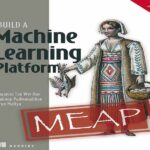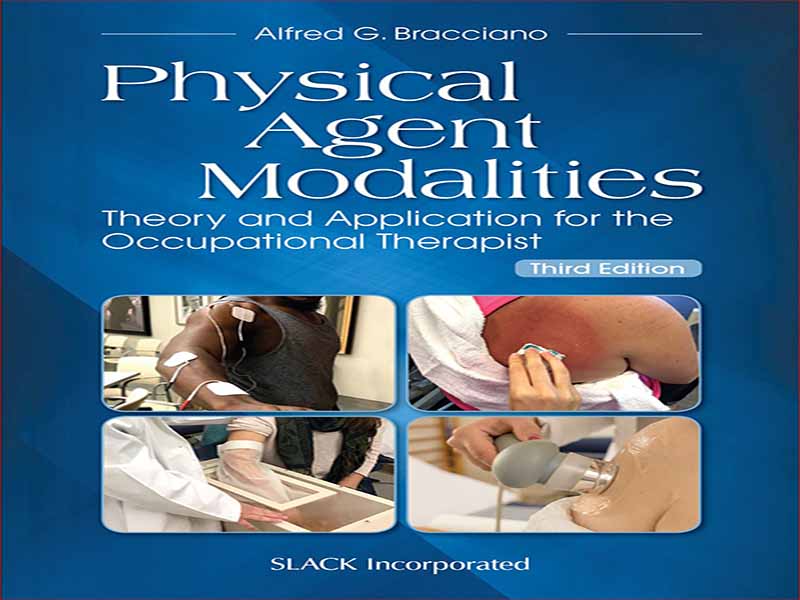- عنوان کتاب: Physical Agent Modalities / Theory and Application for the Occupational Therapist
- نویسنده: Alfred-G.-Bracciano
- حوزه: درمان فیزیکی
- سال انتشار: 2022
- تعداد صفحه: 461
- زبان اصلی: انگلیسی
- نوع فایل: pdf
- حجم فایل: 12.2 مگابایت
در نوشتن ویرایش های اول و دوم این کتاب، متوجه شدم که در حرفه پزشکان به یک توده بحرانی رسیده است – فارغ التحصیلان و دانشجویان جدید که عوامل فیزیکی را به عنوان جزئی از مداخلات درمانی خود ترکیب می کنند. تا حدی، این امر با افزودن استانداردهای خاصی که به عنوان بخشی از الزامات شورای اعتباربخشی برای آموزش کاردرمانی (ACOTE) برای برنامههای آموزشی شناسایی شده است، اثبات شد. من فرض کردم که با اضافه شدن این استانداردها، بحث و جدل در مورد استفاده از آنها فروکش خواهد کرد. با این حال، با تشریح و کاربرد گسترده دستورالعملهای تفسیری ACOTE، فارغالتحصیلان جدید همچنان پیوسته آموزش، آمادگی و درک در استفاده بالینی از عوامل فیزیکی داشتند. همچنین، این حرفه همچنان با چالشها و فرصتهای متنوعی مانند قانون مراقبت مقرون به صرفه (که در اجرای آن نیز با تغییرات و اصلاحاتی مواجه شد) مواجه بود. تغییرات و بازنگری در بازپرداخت با انتقال به مدل پرداخت مبتنی بر بیمار و مدل گروهبندی بیمار محور بر اساس نیاز بیمار به جای یک جزء زمانبندی شده. چالشهای حوزه عمل بهعنوان سایر رشتههای متمرکز بر نتایج عملکردی و شمول و مشارکت در جامعه و در خانه؛ و افزایش سلامت از راه دور، که توسط یک چالش دیگر ایجاد شده است – یک بیماری همه گیر جهانی. یکی از پاسخها به این چالشها و تغییرات مداوم، نیاز به شناسایی و اطلاعرسانی به مشتری و سایر ذینفعان سهم منحصر به فردی بود که کاردرمانی در مراقبتهای بهداشتی و افرادی که از طریق رویکردها و مداخلات خود به آنها خدمات میدهیم، میآورد. تا حدی، نیاز به بیان مشارکت ما برای دههها چالشی مداوم بوده است، زیرا عموم مردم و حتی سایر ارائه دهندگان مراقبتهای بهداشتی هنوز از کاری که ما به عنوان کاردرمانگر انجام میدهیم بیاطلاع هستند و ممکن است ارزش کاری را که انجام میدهیم زیر سوال ببرند، زیرا اغلب به نظر میرسد. به سادگی عمل گرا بودن در محیط فعلی مراقبت های بهداشتی با تیم ها و رویکردهای بین حرفه ای، هر رشته ای از نقطه نظر عملکردی به مشکل می پردازد. ما دیگر تنها رشتهای نیستیم که به «عملکرد» و «استقلال» میپردازد، زیرا پرستاران، پزشکان پرستار، دستیاران پزشک، و گفتار درمانگران و فیزیوتراپیستها نیز این کار را انجام میدهند. اینکه چگونه به استقلال و اشتغال به شغل می رسیم، چیزی است که ما را منحصر به فرد می کند، اما ما باید بیوفیزیولوژی مشتریان خود و تأثیر فیزیولوژیکی آن بر فرد را درک کنیم و بتوانیم آن را در علم و فرهنگ واژگانی که محیط مراقبت های بهداشتی درک می کند، بیان کنیم. که در آن فعالیت می کنیم.
In writing the first and second editions of this book, I noticed a critical mass being reached within the profession of clinicians—new graduates and students incorporating physical agents as a component of their therapeutic interventions. In part, this was evidenced by the addition of specific standards identified as part of the Accreditation Council for Occupational Therapy Education (ACOTE) requirements for educational programs. I assumed that with the addition of these standards, the controversy surrounding use of them would subside. However, with the ACOTE interpretive guidelines being so broadly described and applied, new graduates continued to have a continuum of training, preparation, and understanding in clinical use of physical agents. As well, the profession continued to face a wide variety of challenges and opportunities such as the Affordable Care Act (which also faced changes and modifications in its implementation); changes and revision in reimbursement with the transition to the Patient Driven Payment Model and Patient Driven Grouping Model based on patient need rather than a timed component; challenges to scope of practice as other disciplines focused on functional outcomes and inclusion and engagement in community and at home; and an increase in telehealth, brought on by yet another challenge—a global pandemic. One response to these ongoing challenges and changes was the need to identify and communicate to the client and other stakeholders the unique contribution that occupational therapy brings to health care and the individuals we serve through our approach and interventions. In part, the need to articulate our contribution has been a consistent challenge for decades, as the general public and even other health care providers are still unaware of what we do as occupational therapists and may question the value of what we do because it often appears to be simply pragmatic. In the current health care environment with interprofessional teams and approaches, every discipline approaches the problem from a functional standpoint. We are no longer the only discipline addressing “function” and “independence” because nurses, nurse practitioners, physician assistants, and speech and physical therapists do as well. How we get to the independence and the engagement in occupation is what makes us unique, but we must understand the biophysiology of our clients and the physiological effect on the individual and be able to articulate that in the science and lexicon understood by the health care environment in which we operate.
این کتاب را میتوانید بصورت رایگان از لینک زیر دانلود نمایید.
Download: Physical Agent Modalities



































نظرات کاربران